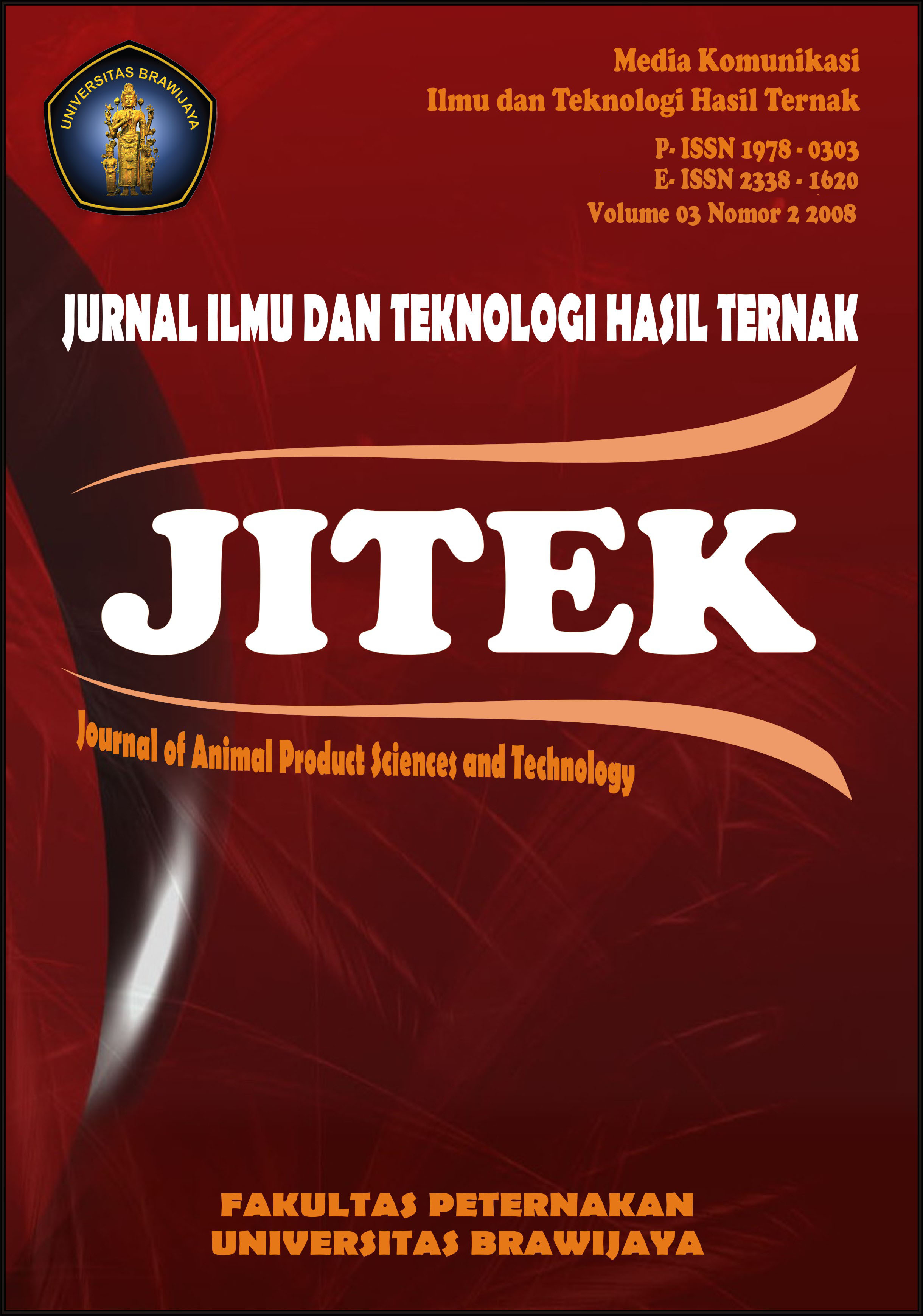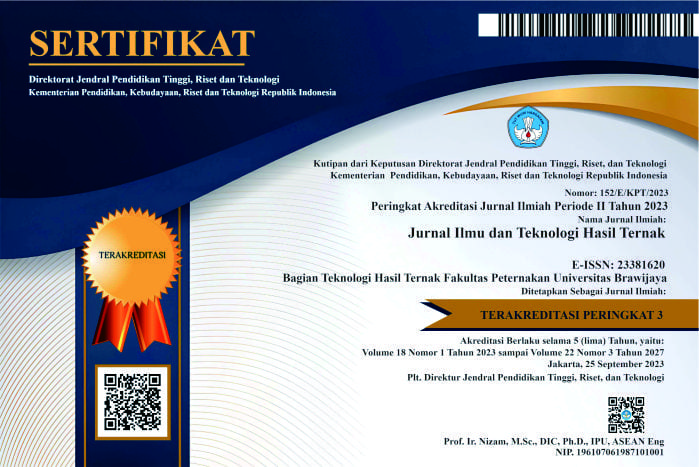The Influence of Aging Period, Freezing Temperature and Packaging Material on Frozen Beef Chemical Quality
Abstract
The objective of the study was to evaluate the influences of aging period, freezing temperature and packaging material on the frozen beef chemical quality. The material of the study was 2-3 years old Ongole grade beef of the Longissimus dorsi part, and was then classified into 3 treatÂments, namely A (aging periode; 0, 12 and 24 hours), B (freezing temperature; -10°C and -20°C) and C (packaging material; aluminum foil (Al), polyprophylene (PP), polyÂethylene (PE) and without packaging material). The obÂserved variables were water content, crude protein, fat, ash content. The data were analyzed by the Completely Randomized Design (CRD) in the Factorial (3x2x4) pattern. The results indicated that the aging periode deÂcreased the water content, and ash content significantly (P<0.05), and decreased the crude protein but increased the fat content insignificantly. The lower freezing temperature prevented the decreases of the water content, and ash content significantly (P<0.05), but prevented the decrease of crude protein, fat content insignificantly. The packaging material could prevent the decreases of water content, ash content sigÂnificantly (P<0.05), but prevent the decreases of protein, and fat content insignificantly. A significant interaction (P<0.05) occured between the freezing temperature and packaging material factors on ash content of the frozen beef. The conclusion was the frozen beef without aging has a high of water content, protein, and ash, but has a low fat content.Temperature at -200C and using aluminium foil packaging can prevent decreasing quality of frozen beef.
Keywords : Aging period, freezing temperature, packaging materialDownloads
Published
Issue
Section
License
Copyright (c) 2012 Aris Sri Widati

This work is licensed under a Creative Commons Attribution 4.0 International License.
Authors who publish with this journal agree to the following terms:
- Authors retain copyright and grant the journal right of first publication with the work simultaneously licensed under a Creative Commons Attribution License that allows others to share the work with an acknowledgement of the work's authorship and initial publication in this journal.
- Authors are able to enter into separate, additional contractual arrangements for the non-exclusive distribution of the journal's published version of the work (e.g., post it to an institutional repository or publish it in a book), with an acknowledgement of its initial publication in this journal.
- Authors are permitted and encouraged to post their work online (e.g., in institutional repositories or on their website) prior to and during the submission process, as it can lead to productive exchanges, as well as earlier and greater citation of published work (See The Effect of Open Access).















